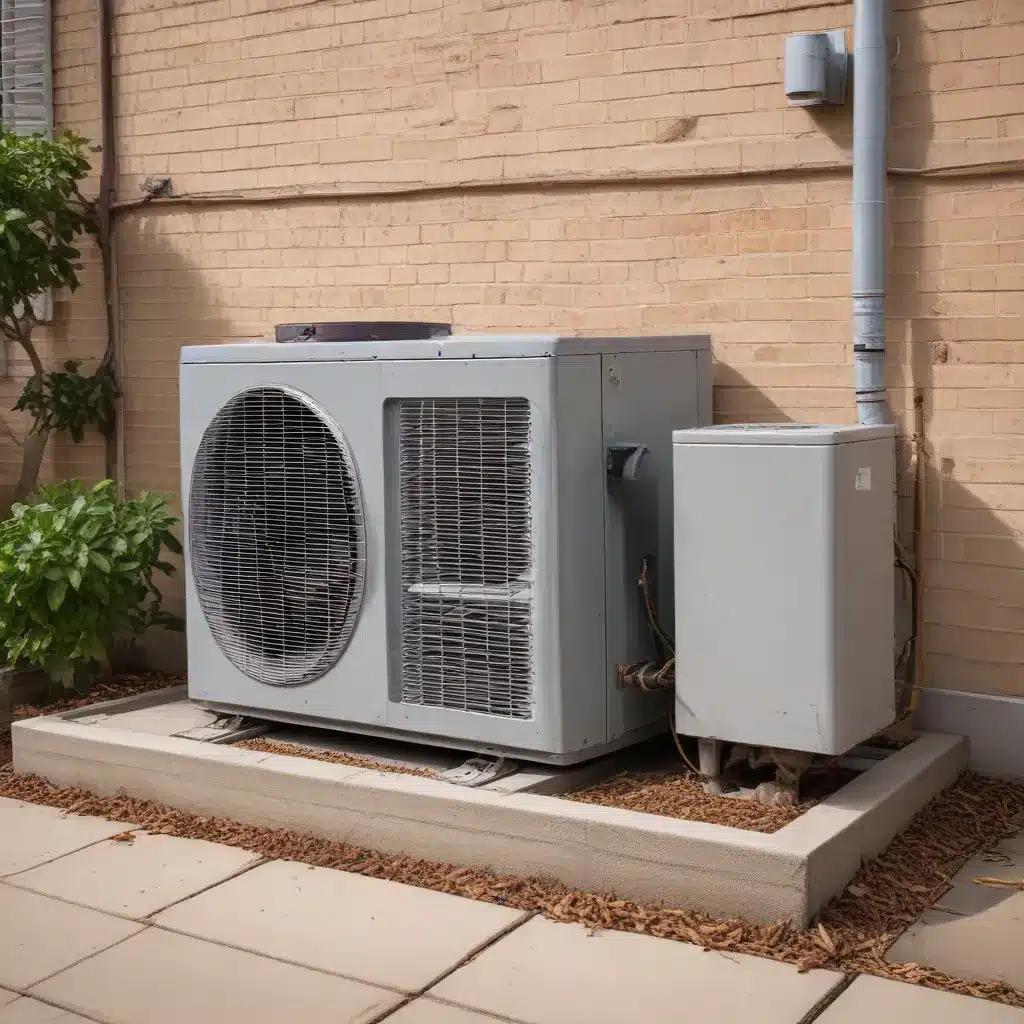
Unlocking the Potential of Older HVAC Systems
As an experienced air conditioning specialist, I’ve seen firsthand the challenges and opportunities that come with optimizing HVAC performance in older homes and buildings. While newer construction often boasts the latest energy-efficient technologies, the reality is that the majority of buildings in the UK were built decades ago, with aging HVAC systems that struggle to keep up with modern demands.
However, this doesn’t mean we’re doomed to inefficiency and high energy bills. In fact, with the right strategies and a deep understanding of HVAC systems, we can unlock significant improvements in older buildings – enhancing comfort, reducing environmental impact, and delivering significant cost savings.
Embracing Energy-Efficient Retrofits
One of the most effective ways to optimize HVAC performance in older buildings is through strategic retrofitting. By carefully assessing the existing system and identifying opportunities for upgrades, we can often achieve remarkable results without the need for a complete system overhaul.
Take, for example, the simple task of duct sealing. Many older buildings suffer from significant air leaks in their ductwork, leading to wasted energy and uneven temperature distribution. By identifying and addressing these leaks, we can improve airflow, increase efficiency, and ensure more consistent comfort throughout the building.
Another impactful retrofit strategy is upgrading to high-efficiency equipment. Modern HVAC systems, such as heat pumps and variable-speed compressors, can dramatically reduce energy consumption compared to their older counterparts. By carefully selecting the right equipment for the building’s needs, we can often achieve significant energy savings without sacrificing performance.
Harnessing the Power of Smart Controls
In today’s digital age, the integration of smart technologies into HVAC systems has become a game-changer for optimizing performance. By leveraging advanced control systems, we can fine-tune the operation of the HVAC equipment to match the building’s specific needs, adapting to occupancy patterns, weather conditions, and other variables.
One of the key benefits of smart controls is the ability to optimize energy consumption. By monitoring and adjusting the HVAC system in real-time, we can ensure that energy is used only when and where it’s needed, reducing wastage and lowering utility bills. Additionally, many smart control systems offer predictive maintenance features, alerting us to potential issues before they become major problems, allowing for proactive maintenance and extending the lifespan of the equipment.
Prioritizing Indoor Air Quality
In the wake of the COVID-19 pandemic, the importance of indoor air quality (IAQ) has come into sharp focus. HVAC systems play a vital role in maintaining healthy and safe indoor environments, and this responsibility is even more critical in older buildings.
By implementing advanced filtration and air purification technologies, we can effectively remove contaminants, allergens, and pathogens from the air, ensuring that occupants breathe cleaner, safer air. This not only promotes physical health but can also enhance cognitive function and overall well-being, leading to improved productivity and reduced absenteeism.
Moreover, proper ventilation and humidity control are essential for maintaining optimal IAQ. Older HVAC systems may struggle to strike the right balance, but with the right adjustments and upgrades, we can ensure that the building’s air is constantly refreshed and maintained at the appropriate temperature and humidity levels.
Embracing Renewable Energy Integration
As the world transitions towards a more sustainable future, the integration of renewable energy sources into HVAC systems has become an increasingly viable and attractive option, even for older buildings.
One such example is the integration of solar photovoltaic (PV) systems. By harnessing the power of the sun, we can offset the energy consumption of the HVAC equipment, reducing the building’s overall carbon footprint and operating costs. Additionally, the combination of solar PV and energy-efficient HVAC technologies can create a synergistic effect, further enhancing the building’s sustainability.
Another renewable energy option worth exploring is geothermal heating and cooling. By tapping into the stable temperatures of the earth’s subsurface, geothermal systems can provide highly efficient and environmentally-friendly heating and cooling solutions, even in older buildings. While the initial installation costs may be higher, the long-term energy savings and reduced maintenance requirements can make geothermal a compelling choice.
Maintaining and Optimizing Older HVAC Systems
Keeping older HVAC systems running at peak performance is crucial, and regular maintenance is the key to success. By following a comprehensive maintenance protocol, we can ensure that the equipment continues to operate efficiently, minimizing energy consumption and extending its lifespan.
This maintenance regimen should include tasks such as:
- Regularly cleaning and replacing air filters to maintain optimal airflow
- Inspecting and cleaning coils, fans, and other critical components
- Calibrating and adjusting controls to ensure accurate temperature and humidity regulation
- Identifying and addressing any ductwork leaks or insulation issues
- Monitoring the system’s performance and making timely adjustments as needed
By staying on top of these maintenance tasks, we can help older HVAC systems perform at their best, delivering reliable comfort and energy savings year after year.
Conclusion: Unlocking a Sustainable Future
As an experienced air conditioning specialist, I’m passionate about helping homeowners and business owners optimize the performance of their older HVAC systems. By embracing energy-efficient retrofits, leveraging smart controls, prioritizing indoor air quality, and integrating renewable energy sources, we can unlock a future of greater comfort, lower energy bills, and a more sustainable built environment.
At Hamilton Air Conditioning, we’re committed to helping our clients navigate the complexities of HVAC optimization and achieve their goals for a healthier, more efficient, and more cost-effective building. Whether you’re managing an older apartment complex or a historic commercial property, our team of experts is here to guide you every step of the way.
So, if you’re ready to breathe new life into your older HVAC system and unlock its full potential, I encourage you to reach out to us today. Let’s work together to create a more comfortable, energy-efficient, and sustainable future for your property.